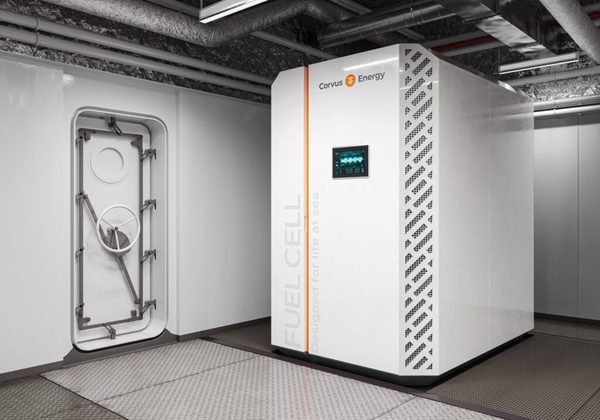Corvus Energy wins EU funding for combining ammonia cracking with fuel cell technology
Norwegian marine technology firm Corvus Energy has won the European Union’s (EU) funding for integrating ammonia cracker technology with its fuel cell system.
 PHOTO: A model of Corvus Energy’s fuel cell system. Corvus Energy
PHOTO: A model of Corvus Energy’s fuel cell system. Corvus Energy
The project dubbed APOLO, intends to use hydrogen produced from onboard ammonia cracker technology as a fuel source for fuel cell systems to power the ships.
Hydrogen can be extracted from ammonia through a process called ammonia cracking. In this process, ammonia is broken down into hydrogen and nitrogen. This process usually happens at high temperatures (up to 900°C) with a catalyst.
The hydrogen produced from cracking will be used by Corvus’ proton exchange membrane (PEM) fuel cells. The fuel cell generates electricity through an electrochemical reaction between hydrogen and oxygen, producing power with only water and heat as byproducts.
Unlike solid oxide fuel cells (SOFCs), PEM fuel cells are better suited for powering smaller ships along shorter routes. Corvus Energy asserts that its fuel cell systems can produce a power output of 125 kilowatts (kW), suitable for various vessels including container feeder vessels, ferries, tugboats and smaller cruise vessels.
The project aims to create viable solutions for ships, particularly those with 1-10-megawatt (MW) propulsion, with a focus on vessels around 3 MW in the next decade.
Other partners in the project include H2Site, Tecnalia, Technische Universiteit Eindhoven, 1 CUBE, Chalmers Tekniska Hogskola, Nuvera, Astander, Fertiberia and LEC GMBH.
They will also test an ammonia cracker with a new ammonia engine that runs on a mix of ammonia and hydrogen.
The funding has been provided under the Horizon Europe Framework Program, which is the EU’s key funding program for research and innovation aiming to tackle climate change.
By Tuhin Roy
Please get in touch with comments or additional info to news@engine.online





